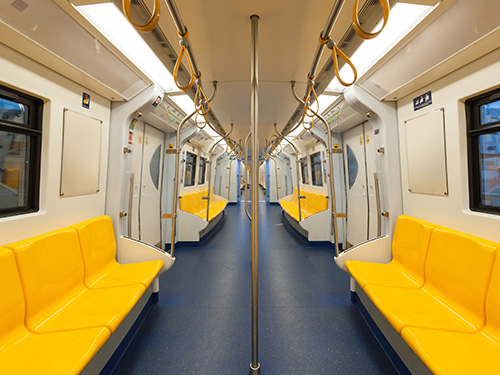Nearly all of the vertical sectors where our products have been specified and installed have one thing in common, they have static structures (or buildings as you and I know them) to monitor and protect. And our products are installed in hundreds of thousands of these right across the globe, daily protecting life and property. Now, they can only do this because, as with all* fire detection products, our devices are tested and approved to specific standards and tested following strict processes, both of which are there to ensure that all of us fire detection manufacturers are designing, building, and supplying products that are fit for purpose and will do what we promise they will do in the event there’s a fire.
You’ll all be familiar with the EN 54 standard for fire detection devices, with the various Parts for each device type; Part 5 for heat detectors, Part 7 for optical smoke etc. These standards dictate both how the product should be designed by the manufacturer and where it should be installed by the fire system engineer. And there’s a standard for most device types, in applications across different building types, across all vertical sectors. But what happens when your “static structure” isn’t static at all? What if your vertical sector relies on structures with wheels instead?
The rail industry in the UK alone generated around £43 billion in 2019 and on average (before Covid put the brakes on travelling in 2020) transported 1.7 billion passengers every year, racking up nearly 52 billion Kilometres between them. Although this is peanuts compared with China’s commuters who travel on average nearly 773 billion Kilometres per year in total. That’s five times the diameter of our solar system!

Now it shouldn’t surprise you that being public spaces filled with members of the public practically 24/7, all train and underground/metro stations in the UK and across Europe should, by strict public law, be protected from fire through the installation of a fire detection system. And in fact our own Project List showing where our devices and systems are installed is peppered with transport hubs such as St Pancras International, Ashford International and Edinburgh Waverley. But how can that protection continue once our passenger has stepped out of the station and onto the train itself?
Train fires are thankfully pretty rare but when they do occur often involve huge numbers of civilian casualties as shown in 2019 when a packed train in Pakistan was quickly engulfed in flames after a gas canister on board exploded, resulting in at least 70 deaths. After decades of research modern train carriages are made from less flammable, sturdier material, while better train control and the reduction of flammable fuels within the passenger compartment has reduced the associated risks considerably. But with the main cause of death in train fires being the inhalation of smoke and toxic products, there’s a real need to ensure early detection, control and extinguishing of a fire by using smoke detectors, heat detectors and automatic and manual extinguishing systems according to the Rail Safety and Standards Board (RSSB).
So, if we take Europe as an example, there’s a specific standard for carriages, DIN EN 50155:2018, which applies to all electronic equipment for control, regulation, protection, diagnostic, supply, etc. installed on rail vehicles. It’s applied in the design, manufacturing and testing of any electronic equipment installed on board rolling stock and also describes the electrical and environmental operating conditions. And you may be surprised to learn that a selection of Hochiki devices, our “Railway Approved” range, has been tested to be compliant with this very standard as well as two others - DIN EN 45545-2:2016-02 (fire testing) and DIN EN 50121-3-2:2017-11 Rail EMC. Meaning that not only does Hochiki protect train stations, but we protect the actual trains themselves too, such as on the Dubai Metro for example.
Designed to take up to 13,380 passengers an hour on its green line, and 11,675 passengers an hour on its red line at peak time, the Dubai Metro is almost 75 km long. With tens of thousands of passengers using the network daily and the system itself operating in a hot and sandy environment, any false alarm could potentially cause mass disruption and cost the operator financially, especially during peak service times.
So Hochiki sensors have been installed inside both the metro stations and inside the tram coaches, as this project was considered an extremely sensitive area with thousands of people transiting at a time, posing a higher chance of triggering false alarms. With this in mind the system is configured so that any fire alarm triggers the sending of a command to the central station, which halts the operations within the entire network, until the problem is rectified.
This joined up approach to life safety, providing complete protection for every train passenger across their whole journey, from start to finish is just one example of how Hochiki can make a difference in a vertical sector such as Transport. There’s lots of ways in which we support and protect a whole range of sectors like this and with over 100 years of history behind us, where else are you going to place your trust?
*We shouldn’t really need to point this out – but please don’t use any products designed to save human life that aren’t officially approved by a recognised third party testing body with certification to back it up. They are, unfortunately, out there. But please, just don’t.